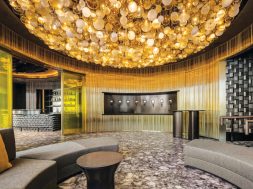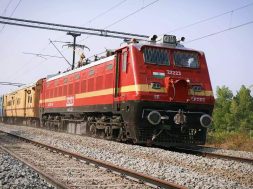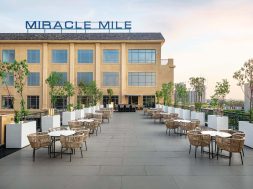Enia’s innovative approach to Nagpur Metro Phase-2

Enia envisions metro stations as architectural landmarks that seamlessly blend efficiency with
aesthetics, fostering a sense of pride and belonging in the hearts of commuters.
The Prime Minister of India recently laid the foundation stone for the Nagpur Metro Phase-2 Project, marking a significant milestone for the city’s public transportation system. This event unfolded concurrently with the inauguration of Phase-1, where Enia played a pivotal role in designing 11 elevated stations, including the Sitaburdi interchange. Furthermore, Enia was honoured to contribute to the design of the Nagpur Central Railway station, emphasising its role as a key player in shaping the city’s infrastructure.
Building on this success, Enia is thrilled to announce that they have been awarded the design scope for an additional ten metro stations in Nagpur as part of Phase 2. This ambitious project entails a 43.8-kilometre extension, branching into the city’s suburbs in all four directions: north to Kanhan, south to Butibori, east to Transport Nagar, and west to Hingna. The goal is to provide a comfortable, reliable, and sustainable public transport system for daily commuters, catering to their work, education, and leisure needs.
In contrast to Phase-1, where the station architecture aimed to establish and celebrate Nagpur’s identity, Phase-2 emphasises standardisation, optimisation, and economisation to meet project requirements. Nevertheless, Enia remains committed to infusing a contemporary and modern identity into suburban stations, fostering a sense of belonging and pride among commuters. The design, characterised by straight lines and modern materials, seeks to make stations visible, approachable, and identifiable within their diverse surroundings. Recognising the transformative impact of mass rapid transit systems, Enia views each metro station as a potential catalyst for urban reform and a hub for public activities. This perspective could be a boon to local economies surrounding these stations.
Enia’s design focus for Reach-3A and Reach-4A involves addressing the unique challenges of planned flyovers integrated with viaducts and stations. The resulting three levels of parallel transportation, the metro line above, the flyover below, and the road beneath the flyover, present technical challenges and creative opportunities. Enia plans to locate most station functions in side buildings next to the road to ensure the infrastructure remains relatable and not imposing, serving as entry points for commuters and public concourses. The station structures will primarily house platforms, vertical circulation, and life safety amenities, giving them a lighter appearance. Enia emphasises the critical role of roof material choice for the platforms in achieving these objectives.
Envisioning medium-scale multistory buildings at the roadside structures, Enia plans to integrate retail and food and beverage spaces. This strategy leverages foot traffic to generate non-fare revenue for the metro system. At the ground level, each station will facilitate multimodal integration with city buses, taxis, autorickshaws, and non-motorised transport. Carefully designed drop-off and pick-up areas and provisions for feeder transport and EV charging stations address the usual space constraints associated with these functions. Additionally, parking facilities may be developed on some sites, enhancing accessibility for commuters arriving from adjacent towns and destined for Nagpur city.
As architects, Enia believes in the significant role they can play in engineering-driven projects like metro stations. By incorporating ergonomic, environmental, and aesthetic qualities, Enia aims to transform these structures from utilitarian entities into wholesome pieces of architecture. Partnering with Mahendra Raj Consultants for structural design, Enia is poised to contribute to the evolution of Nagpur’s transportation landscape.
For more info visit: https://www.enia.fr/en
50
Cookie Consent
We use cookies to personalize your experience. By continuing to visit this website you agree to our Terms & Conditions, Privacy Policy and Cookie Policy.










